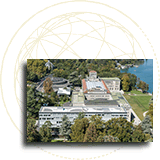HANDBOOK ON ACCESSION TO THE WTO: CHAPTER 4
The accession process — the procedures and how they have been applied
The procedures followed by accession Working Parties are based on WTO document WT/ACC/1 entitled “Accession to the WTO — Procedures for Negotiations under Article XII” of 24 March 1995. This was issued by the WTO Secretariat in close consultation with Members as a practical, non-binding guide. The procedures have evolved somewhat since that date, but the document is still basically valid.
The Working Party process is divided into three distinct phases, the main features of which are:
Phase 1. This is devoted to the collection of factual information on the trade regime of the applicant. This fact-finding stage is needed in order to provide both WTO Members and the applicant with a basis for their work. It has two main purposes: to clarify any changes that the applicant will need to make in order to bring laws, regulations and administrative practices into conformity with WTO requirements; and to provide a baseline for the negotiations that will take place on market access for goods and services.
The applicant first submits a Memorandum containing a detailed description of its foreign trade regime. Receipt of the Memorandum triggers the Working Party process and Members then submit written questions to the applicant asking for clarifications or additional data where necessary. Only when written answers have been received from the applicant and an adequate factual basis obtained does the Working Party hold its first meeting. The first meetings of the Working Party see a continuation of this fact-finding process and a progressively clearer identification of areas of possible inconsistency with the WTO agreements. As the information-gathering stage advances, and in order to ensure the transparency of the process, the Secretariat is often requested to circulate a Factual Summary of Points Raised — an informal document summarizing discussions in the Working Party. This document gradually develops into a draft Working Party Report.
Phase 2. At an appropriate moment, Working Parties move on to negotiate the terms of accession. All WTO Members have accepted commitments on its rules, on agricultural support and export subsidies, on customs tariffs and on services, and acceding governments are expected to do likewise. Negotiations on the general rules relating to goods, TRIPS and services take place multilaterally in each Working Party. Acceding governments are expected to observe these rules as well as the commitments negotiated in the Working Party. Consultations and negotiations with the applicant on the level of agricultural support and export subsidies take place plurilaterally, i.e. in a group consisting of the members of the Working Party interested in these issues. Other issues such as SPS, TBT, or even TRIPS have also been taken up in a plurilateral setting. Alongside with these negotiations, the applicant negotiates bilaterally with interested Working Party members on conditions of access to its market for goods and services. The aim of the negotiation on goods is to reach agreement on maximum permitted levels for customs duties. In the case of services, the negotiations deal not only with limitations on market access for services and service providers in different sectors but also with limitations on national treatment and any exemptions from the most-favoured-nation provisions of the GATS.
Phase 3. The text of the draft Report is examined and finalized in the Working Party. This includes the commitments on the general rules to be accepted by the acceding country and a draft Protocol of Accession. The results of the bilateral negotiations on goods and services and of the plurilateral consultations and negotiations on agricultural support are consolidated in draft multilateral Goods and Services Schedules, reviewed by the Working Party and annexed to the text of the draft Report. The Working Party then agrees the draft Report as a whole74 and forwards it to the General Council/Ministerial Conference for adoption.
While these three stages are conceptually distinct and taken up in the above sequence, they often overlap in practice. The following sections deal with each of the steps in this process.
Notes:
74. While the Goods Schedule and the Services Schedule are integral parts of the Reports of Accession Working Parties they are, for practical reasons, issued in separate addenda to the Reports. back to text
